KISANGANI, Democratic Republic of Congo - U.S. and Democratic Republic of Congo (DRC) representatives gathered February 17, 2010, at a military base outside of Kisangani in north-central DRC to mark the establishment of a light infantry battalion intended to be a model unit for the future of the Congolese military. Representatives of the United Nations and the international community also attended.
The train-and-equip mission, part of a long-term, multi-lateral U.S.-DRC partnership to promote security sector reform in the country, will assist the DRC government in its ongoing efforts to transform the Armed Forces of the DRC (Forces ArmAfAes de la RAfApublique DAfAmocratique du Congo, widely known as FARDC).
The training is intended to increase the ability of the Congolese army to conduct effective internal security operations as part of the FARDC's rapid reaction plan, help preserve the territorial integrity of the DRC, and develop an army that is accountable to the Congolese people. This initiative also represents one aspect of a long-term, multiagency, international approach to promote a sustainable peace through the creation of a model unit in the FARDC.
Brigadier General Jean-Claude Kifwa, commander of FARDC's 9th Region, spoke at the ceremony, saying he thought it was a sign of progress that a quick reaction force was being established in his region.
"I'd like to thank the authorities of my country for choosing Kisangani to be the center of quick reaction forces," Kifwa said. "I think this is progress in the reform of our new army." He said that the battalion's main mission would be to protect the territorial borders of the Democratic Republic of Congo and the Congolese people and their goods.
During the ceremony, Ambassador William Garvelink, U.S. Ambassador to the DRC, emphasized the commitment of both governments, saying, "The United States of America and the Democratic Republic of Congo are committed to a partnership to train and professionalize a FARDC battalion that will respect and protect the Congolese people. As with all our military training, our objective is straightforward. We seek, with the support and assistance of the Democratic Republic of Congo, to develop a professional force that respects civilian authority and that provides security to all citizens of this country."
Members of the newly formed light infantry battalion will undergo a 6-8 month training program at the Base Camp in Kisangani. The training will cover small unit tactics, food preparation, maintenance, medical care and first aid, logistics support, HIV/AIDS prevention and communications. Human rights considerations and the respect for human rights in military operations will be incorporated in each aspect of the training.
"The commanders, staff officers and noncommissioned officers who will lead this battalion began their training last year in Kinshasa," Garvelink explained. He added that the battalion's soldiers were all carefully selected by the FARDC to "ensure the highest caliber of trainees possible."
U.S. Africa Command (U.S. AFRICOM), via its Special Operations Command component, is providing on-the-ground oversight of the training program, which will be taught by U.S. military personnel and Department of State-hired contractors.
Senior leadership from U.S. Africa Command traveled to Kisangani from the command's headquarters in Stuttgart, Germany. In attendance were Ambassador Anthony Holmes, deputy to the commander for civil-military activities; Major General Richard Sherlock, director of the command's Strategy, Plans and Programs Directorate; and the commander of U.S. Special Operations Command Africa, Brigadier General Christopher Haas.
Guests at the ceremony included representatives from the United Nations Observer Mission in the Democratic Republic of Congo (MONUC), the European Communications Security and Evaluation Agency (EUSEC), and civil society leaders, including members of the religious communities, human rights groups, University of Kisangani authorities, and local and national press.
A news conference followed the ceremony allowing members of the press and civil society leaders to ask questions of representatives from the U.S. and DRC governments.
Several members of the press and civil society asked whether U.S. Africa Command was building a base in the DRC.
"Africa command is not looking to move a headquarters to the continent of Africa," said Sherlock of the U.S. AFRICOM Strategy, Plans and Programs Directorate. "Our efforts with our partners in the FARDC are designed to grow capacity within the FARDC to grow a professional battalion that is responsible to a civilian government and to the people of the Democratic Republic of Congo. Our efforts are not about Africa Command. Our efforts are in support of our partners in the Democratic Republic of Congo."
The light infantry battalion training is taking place at a camp that belongs to the DRC, and the decision to establish the battalion outside of Kisangani was made by the Congolese government, as explained by Brigadier General Kifwa.
When asked about any possible hidden policy agenda of the United States in the Congo, Ambassador Garvelink answered, "The interest of the United States in the Congo is to see a democratic, representative government that takes care of its people and is at peace with its neighbors. That's what our objective is."
"We are training an initial battalion," Garvelink added, "and hopefully that's a platform from which additional training of Congolese troops can be done by very well trained Congolese troops. So we hope that the training will continue and expand under the direction and leadership of the Congolese military itself."

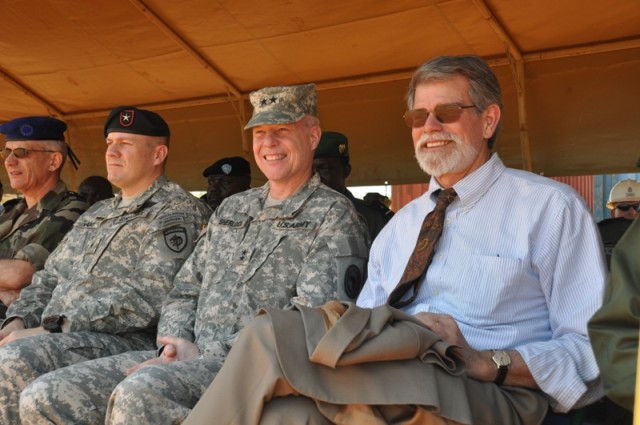

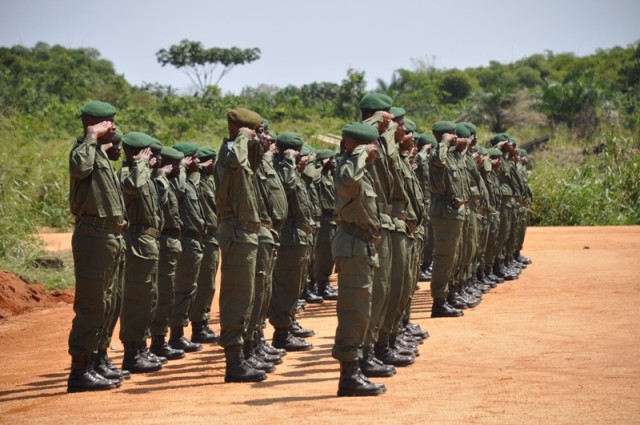
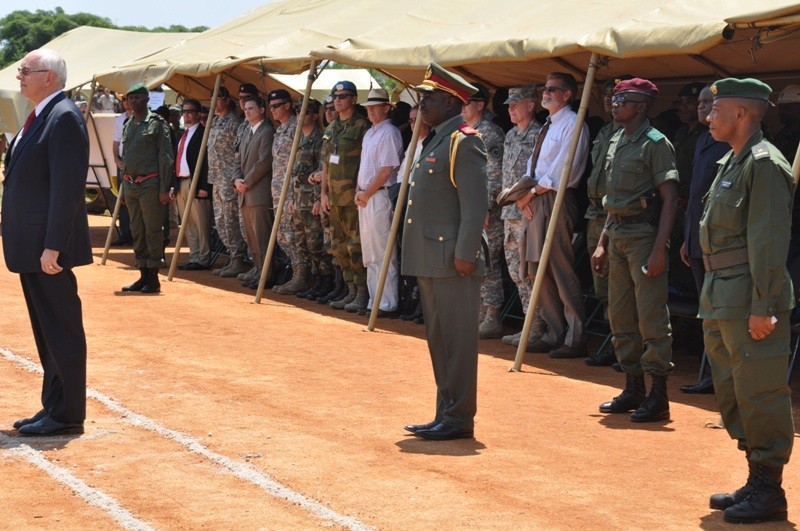

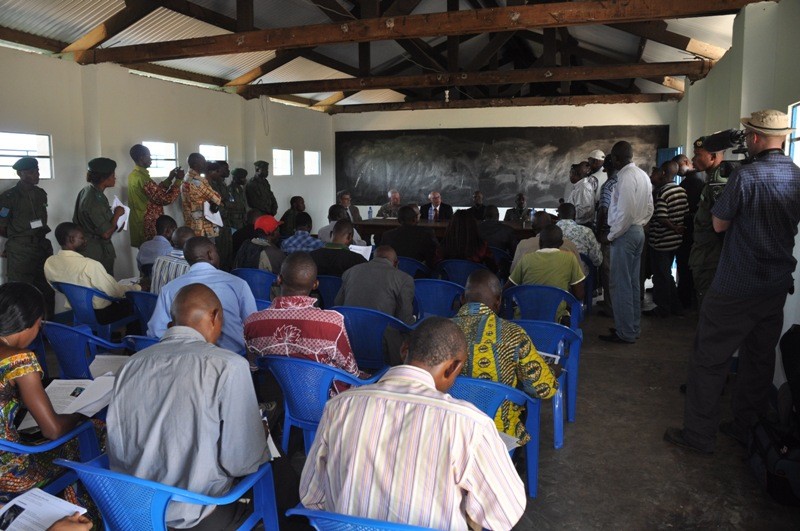
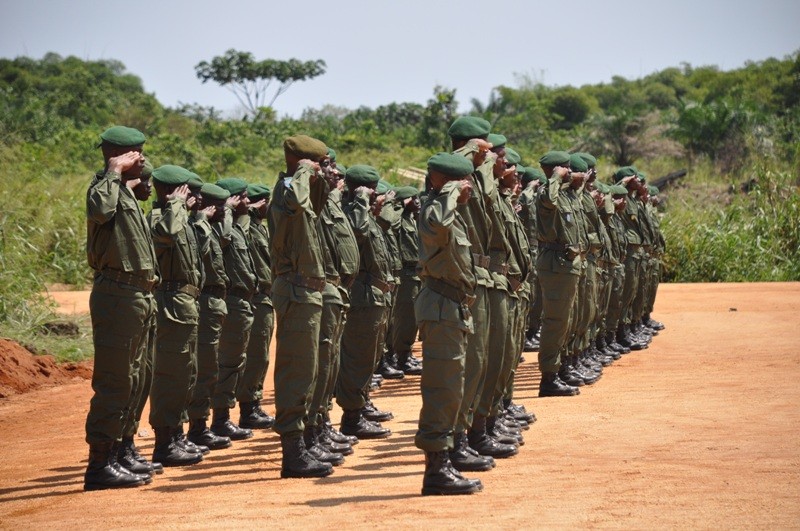
Social Sharing